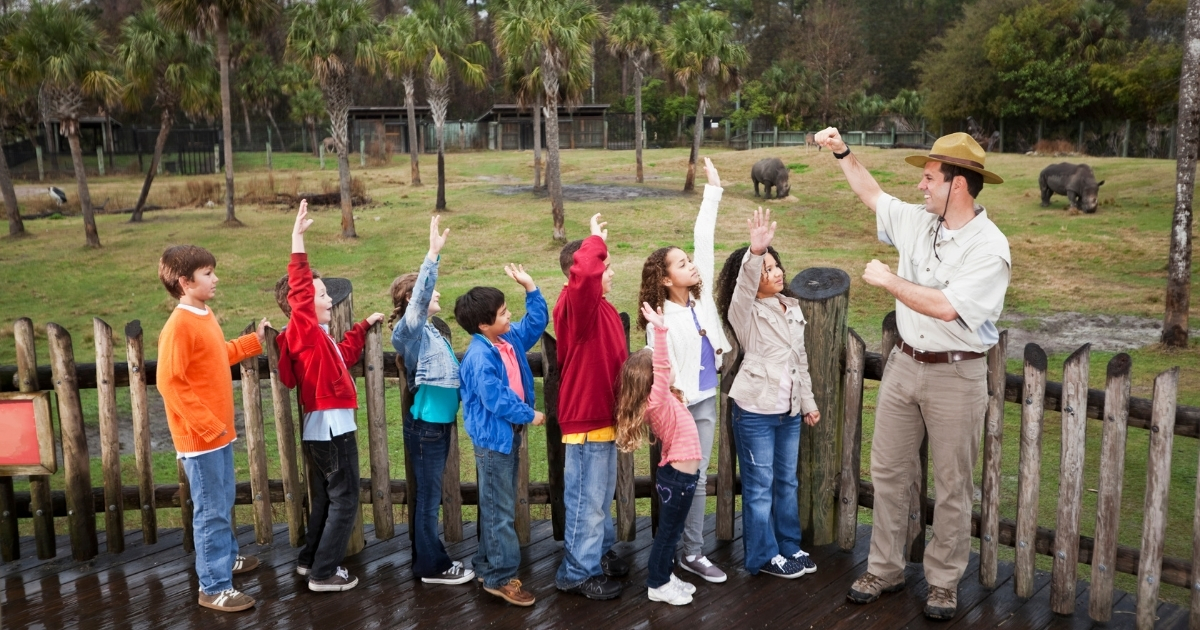Homeschooling offers a flexible and enriching way to educate your child, and field trips are a fantastic way to bring lessons to life. But how many field trips should you include in your school year? The answer depends on your family’s schedule, educational goals, and your child’s learning style.
This guide will help you balance your plans by offering practical advice on how to plan effective homeschool field trips and align them with educational objectives.
Factors To Consider When Planning Homeschool Field Trips
The number of field trips you take hinges on several factors, from your curriculum to your child’s interests. Here are some critical aspects to evaluate when deciding how often to plan outings:
- Curriculum Needs
Determine which subjects or units can be enhanced with hands-on experiences or real-world examples. For instance, a biology unit might pair perfectly with a trip to a local botanical garden or natural history museum.
- Your Family’s Schedule
Homeschool schedules are unique, and some families prefer a slower pace, while others thrive on a packed calendar. Block times for field trips according to what feels manageable for you. Start with once a month, then adjust as necessary.
- Learning Styles and Interests
Hands-on learners may benefit from frequent trips to see concepts in action, while a child who thrives in a more structured environment might need fewer and more focused outings.
- Local and Regional Opportunities
Explore what’s available nearby—parks, museums, zoos, cultural centers, or historic landmarks—and design trips to take advantage of accessible resources. If you live in a rural area, you might need to consider longer travel times but fewer trips.
- Budgetary Considerations
Factor in admission fees, transportation costs, and potential meal expenses. Many venues offer homeschool discounts or free days, so a little research can go a long way in stretching your budget.

Building A Schedule That Enhances Learning
Creating a well-thought-out schedule is key to maximizing the educational value of your homeschool field trips. Here are tips on building a balanced plan for the school year:
Monthly Field Trips
Aiming for one field trip per month can provide a consistent rhythm to your year. Here’s how you might structure these outings:
1. Tie Them to Lessons
Align trips with the unit or subject area you’re teaching. For example, if you’re studying astronomy, look for a planetarium visit during that unit.
2. Seasonal Opportunities
Outdoor activities like nature hikes or visits to working farms often pair well with spring and fall months. Winter might lend itself to indoor activities like museum tours.
3. Include Review and Reflection
After each trip, set aside time for your children to reflect on and discuss what they learned. They could write a travel journal entry, create a digital presentation, or even craft a project based on their visit.
Special Themed Weeks or Days
Another approach is dedicating certain weeks or days to immersive hands-on learning. For example, having “Homeschool History Week” could include consecutive visits to historical landmarks, inspiring a deeper exploration of your child’s studies.
Flex Days
Flexibility is one of the hallmarks of homeschooling. Keep a few unscheduled days in your planner to take advantage of impromptu learning opportunities. For instance, a visiting art exhibit might be the perfect complement to your child’s art unit.
Ideas For Memorable And Educational Field Trips
Homeschooling families have a wide range of options for educational outings, with many destinations offering meaningful learning opportunities. Below are ideas categorized by subject area to help you choose trips that fit your curriculum.
Science
- Natural History Museums – Explore exhibits on fossils, animals, and the earth’s geology.
- Planetariums – Introduce kids to the wonders of space, constellations, and astronomy.
- Aquariums – Learn about marine biology and the importance of conservation.
- Zoos and Wildlife Reserves – Observe animal behavior and ecosystem diversity.
- Nature Reserves or National Parks – Take the classroom outside to study ecosystems and biodiversity firsthand.
History and Social Studies
- Historical Landmarks – Visit Civil War battlefields, colonial villages, or ancient ruins.
- Cultural Museums – Learn about art, culture, and history through interactive exhibits.
- State or National Capitals – Spend time exploring the architecture and history of governance.
- Genealogy Research at Libraries – Deepen understanding by tracing family histories.
Art and Literature
- Art Museums – Study masterworks up close while learning the history of art movements.
- Local Theaters or Productions – Watch live storytelling to complement lessons on literature.
- Bookstores and Libraries – Attend book readings or author signings for inspiration.
Life Skills
- Community Service Sites – Visit shelters or food banks to teach empathy and civic responsibility.
- Businesses/Factories – Tour a bakery, manufacturing plant, or broadcasting station to see careers in action.
- Farm Visits – Teach children where food comes from and highlight sustainable practices.
- Recycling Centers – Engage with lessons on environmental responsibility.
Balancing Field Trips with At-Home Learning
Some parents worry about overloading their homeschool schedule. Striking a balance between outings and in-home learning ensures that children don’t feel overwhelmed while still reaping the benefits of these trips.
Field trips don’t have to replace lessons; instead, see them as a supplement. For example, if your child is learning about ecosystems in science, a trip to a nature preserve can give real-world context without detracting from the curriculum. The key is planning field trips to build on what they’re learning rather than pulling focus away from the core subjects.
Additionally, combining outings with hands-on activities at home can enhance retention. For instance, after a trip to an art museum, children might try their hand at creating replicas of the art they saw. Alternatively, you can schedule quiet, structured days following field trips for review, organizing notes, or working on related projects.
Making Each Outing More Impactful
Field trips are about quality, not quantity. Even if you only take six trips a year, making them intentional can yield incredible educational benefits. Here are ways to elevate your outings for deeper learning:
1. Prepare in Advance
Offer background materials like books, videos, or discussions to introduce the location or topic beforehand. If you’re visiting a historical site, talk about its significance before stepping foot on it.
2. Encourage Exploration
Encourage curiosity and interactive questioning during the trip. This not only enriches their understanding but improves communication skills.
3. Follow Up with Activities
Post-trip activities can solidify the lessons learned. Some simple post-field trip activities include:
- Drawing, painting, or sketching highlights from the trip.
- Journaling observations or creating a scrapbook.
- Preparing short presentations or sharing findings with the family.
4. Collaborate with Other Families
Consider joint trips with other homeschooling families. Not only can this reduce travel or entrance costs, but it also builds a sense of community for your children.
With thoughtful planning and a focus on quality over quantity, homeschool field trips can enrich your child’s educational experience significantly. Incorporating trips into your routine, even on a monthly basis, ensures you strike a balance between structured in-home learning and the dynamic, hands-on experiences these outings offer.





